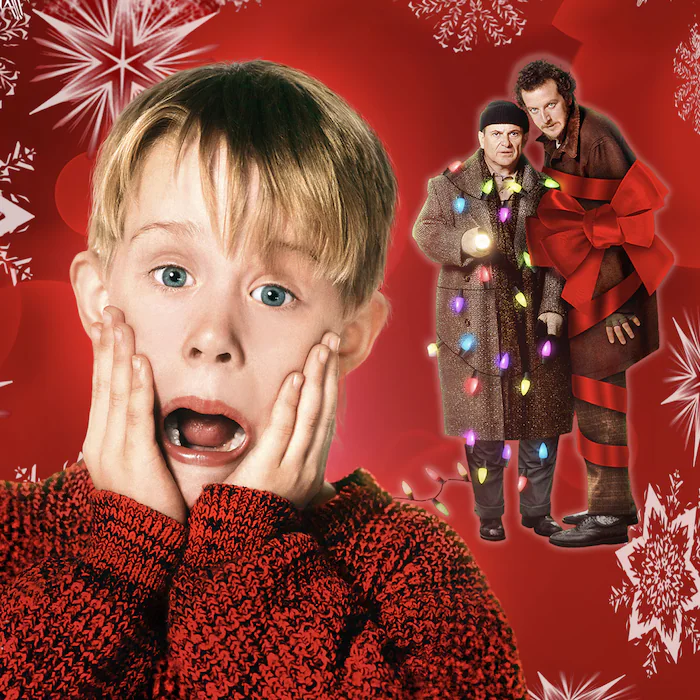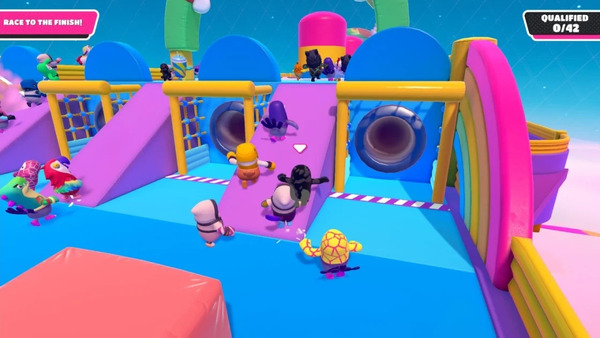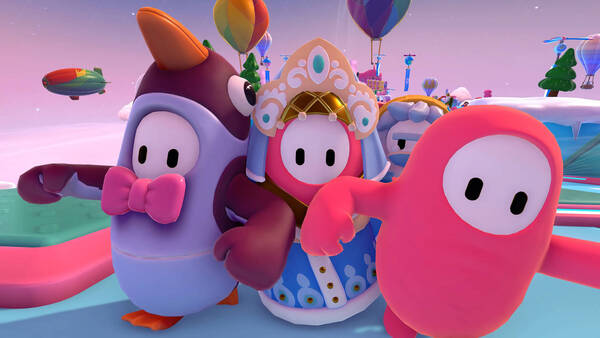The release of Inside Out 2 brings with it the same emotional depth, whimsical world-building, and relatable journey through a young character's mind that made its predecessor so iconic. While the movie's vivid portrayal of emotions as personified characters remains at its core, it raises a unique issue: the struggle of shifting narratives and the challenge of character development when emotions, once solid and definitive, now encounter conflicting complexities. This dilemma has sparked considerable discussions among fans and critics alike. Unlike the neatly organized emotions of the first film, Inside Out 2 tackles a more chaotic landscape of psychological growth. The question arises—how do the filmmakers portray emotional development when the lines between emotions blur, and those feelings begin to mirror the complexity of real life?
1. The Complexity of Emotional Development in a Growing Mind
In the original Inside Out, Riley’s emotions were easily defined—Joy, Sadness, Anger, Disgust, and Fear. Each emotion operated with clear objectives, working together to help Riley navigate her life’s challenges. However, as Riley matures in Inside Out 2, the movie portrays emotional complexity that is far more ambiguous. Riley is no longer a simple, uncomplicated child. She’s growing into a teenager, and her emotional world mirrors that growth. No longer is she primarily influenced by basic reactions; her emotions now exist on a spectrum.
1.1 Growing Emotional Spectrum
The introduction of more nuanced emotional responses in Inside Out 2 leads to complex conflicts between the emotions themselves. Joy, once the dominant force in Riley’s mind, now shares the spotlight with other, more complicated feelings. The characters, once easily understood, are now navigating new territory in how they interact. For example, the typical reactions of Anger or Disgust are less impulsive and more rational. Riley’s emerging self-consciousness brings a layer of complexity to how each emotion interacts, and this makes for a much more dynamic and less predictable narrative.
1.2 Emotions as Partners Rather Than Opposites
In Inside Out 2, the film subtly illustrates that emotions don’t always exist in opposition. Joy and Sadness, traditionally seen as polar opposites, learn to collaborate, not just to manage Riley’s life but to deal with the evolving dynamics of her changing environment. This shift is significant in terms of character development: the concept of opposites is tossed aside for emotional collaboration. It reflects how, in real life, people don’t simply feel one thing at a time. Emotions overlap and influence one another, creating a more intricate landscape.
2. The Consequences of Emotional Turmoil on Riley’s Growth
As Riley’s life becomes more stressful, emotional turmoil begins to interfere with her decision-making and sense of identity. Where once her internal world was neatly organized, this second installment explores how the stress of growing up leads to the fragmentation of emotional experiences. The psychological tension portrayed in Inside Out 2 is not only felt in Riley’s external world but deeply embedded in the fabric of her internal emotional structure.
2.1 Identity Crisis and the Struggle for Balance
Teenagers face an identity crisis, and Riley is no different. Her emotions start to battle for supremacy. The clearer sense of purpose from the first movie gives way to emotional chaos. This internal discord becomes especially apparent when Riley faces crucial decisions that seem to stem from conflicting emotions—desire versus responsibility, independence versus attachment. The emotions’ inability to easily resolve Riley’s conflicting feelings about her future provides a compelling reflection of how personal growth is rarely linear.
2.2 Emotional Stress and the Need for a New Order
One of the major consequences of this emotional turmoil is the reorganization of Riley’s “headquarters,” the central control hub where all emotional decisions are made. The emotional characters realize they must adapt to a new order to deal with growing complexity. The traditional emotions—Joy, Sadness, Anger, Fear, and Disgust—must learn to work in tandem, without the clear-cut roles they once played. In this sense, Inside Out 2 pushes the boundaries of its own universe, reflecting real-world struggles with internal harmony.
3. The Role of Memory and Recollection in Emotional Maturity
In Inside Out 2, memory plays an essential role in demonstrating how Riley’s emotions evolve. The way Riley recollects past memories and interprets them changes dramatically. This is more than just a plot device. It symbolizes the way our understanding of our experiences shifts as we grow. What was once simple becomes complicated as we mature, and our memories are no longer static but revisited and reinterpreted with new emotional contexts.
3.1 Revisiting Past Experiences
The film features several sequences where Riley’s memories are revisited, often with a new emotional filter. These revisits highlight how Riley’s memories, previously seen as bright, clear, and distinctly categorized, now feel fractured and less certain. Some memories are now accompanied by a more complex set of emotions, while others are simply forgotten. This process of revisiting memories illustrates how emotional maturity requires reflection on one’s past, and how emotions, when revisited, can offer new perspectives.
3.2 Memory as a Tool for Reconciliation
In addition to showcasing the complexity of memories, Inside Out 2 uses memory to depict how Riley’s emotions gradually learn to reconcile conflicting feelings. What was once anger at a parental figure, or frustration with a friend, might evolve into understanding or empathy. This emotional maturation reflects real-life processes of reconciliation, a theme that makes the film not just about coming-of-age, but also about healing and personal growth.
4. The New Emotional Cast: Introducing New Emotions
One of the most significant additions in Inside Out 2 is the introduction of new emotions, which highlight the complexities of Riley’s evolving mindset. These new emotions act as a reflection of Riley’s growth, introducing ideas that didn’t previously exist in her emotional universe.
4.1 The Entrance of “Regret” and “Anticipation”
Two new emotions—Regret and Anticipation—add significant layers to the emotional dynamic in Riley’s mind. These emotions help emphasize the anxiety that comes with decision-making, and the uncertainty that accompanies growing up. Regret, for instance, acts as a reminder of choices not made, while Anticipation fuels the excitement and uncertainty of the future. Together, these emotions create an environment in which Riley must process not just past and present, but future potential as well.
4.2 The Impact of These Emotions on Existing Characters
The addition of new emotions creates tension between existing characters, as the older emotions like Joy and Sadness struggle to maintain their places in Riley’s emotional hierarchy. This tension leads to internal conflicts, with each emotion seeking to assert its importance. As Inside Out 2 navigates this struggle, it creates opportunities for the older characters to grow, evolve, and learn from the newer emotions.
5. The Influence of External Forces on Internal Emotions
In Inside Out 2, external forces such as school life, peer relationships, and family dynamics significantly influence Riley’s emotional world. Unlike the first film, where Riley’s emotions were largely impacted by a single event (the move to San Francisco), the second movie complicates this dynamic by introducing multiple external stressors.
5.1 School and Social Dynamics
Riley’s emotional state is profoundly impacted by her interactions at school. The increasing demands of academic life, as well as the shifting dynamics of her friendship groups, force her emotions to contend with new complexities. Peer pressure, popularity, and social exclusion become powerful influencers in how Riley processes her experiences. This external pressure reflects how teenagers are shaped by their social environments in ways that are sometimes out of their control.
5.2 Family Pressure and Expectations
Another powerful external force in Inside Out 2 is family expectations. As Riley matures, she faces the increasing pressure of meeting family expectations, both academic and personal. These pressures force her emotions to deal with feelings of inadequacy and guilt. The struggle of balancing personal desires with family obligations creates a particularly poignant emotional arc, making the movie resonate deeply with audiences.
6. The Changing Role of Joy in Riley’s Life
In the first Inside Out film, Joy played the dominant role, often acting as the emotional leader of the group. However, in Inside Out 2, Joy’s role begins to shift. She is no longer the ultimate “fixer” of Riley’s emotional turmoil, and instead, she must learn to share the responsibility of guiding Riley’s emotional journey with other emotions, especially Sadness.
6.1 The Diminishing Control of Joy
Joy’s diminishing control over Riley’s emotional life is both a symbol of Riley’s growing independence and the natural evolution of emotional complexity. Joy’s shift from a controlling force to a more supportive role marks a coming-of-age moment for Riley and reflects the personal growth required to navigate the world as a teenager.
6.2 Joy’s Struggle with Acceptance
As Joy faces her diminishing role, she must come to terms with her own place within the emotional landscape. This internal struggle for acceptance makes her character arc both relatable and emotionally charged. As she learns to accept the validity of other emotions, she begins to mature in a way that reflects Riley’s own development.
7. The Symbolism of Riley’s Emotional Headquarters
The emotional headquarters, the central hub where emotions interact with Riley’s mind, plays an even more significant role in Inside Out 2. This time, it is portrayed as a place in flux. The structure of Riley’s mind is no longer stable, reflecting the disorganized and chaotic nature of her emotions as she transitions into adolescence.
7.1 Headquarters as a Metaphor for the Mind
The shifting nature of Riley’s headquarters serves as a metaphor for the unpredictable, turbulent nature of the teenage mind. The once neat and orderly control center becomes fragmented and less predictable. The representation of the headquarters highlights the difficulty of managing emotions in a world that constantly changes. This setting reflects the uncertainty and confusion that come with adolescence.
7.2 A Visual Representation of Emotional Growth
The evolving design of the headquarters serves as a visual cue for emotional growth. The construction of new rooms, the introduction of new emotional systems, and the constant reshuffling of the control center’s functions all point to the fluidity of emotional development. The headquarters becomes more chaotic but also more flexible, reflecting the complexity of Riley’s emotional state.
8. The Climax: Riley’s Ultimate Choice
As Riley nears a crucial decision in the film, her emotions must work together in a way they never have before. This climactic moment tests the limits of emotional complexity and maturity. The movie forces Riley—and by extension, the audience—to confront the idea that emotional growth is about acceptance, not control.
8.1 The Emotional Teamwork Required for Change
Riley’s final emotional resolution is a moment of great teamwork, where all emotions must come together to help her make a life-changing choice. The lesson learned here is profound: emotional maturity isn’t about balancing joy and sadness but about integrating all emotions into a cohesive whole.
8.2 The Final Emotional Transformation
The ultimate transformation Riley experiences is not just about a single decision but about learning to accept all parts of herself. The emotions, in their complexity, help her grow into a more fully realized individual. This journey highlights the transformative power of emotional maturity, as Riley steps into the next phase of her life.
9. Emotional Healing: The Aftermath of Change
After the climactic decision, Riley’s emotional landscape settles into a new equilibrium. This aftermath serves as a reminder that emotional growth is ongoing. Just as Riley’s emotions have evolved, so too will they continue to change as she moves forward in life.
9.1 Healing through Self-Acceptance
Riley’s emotional healing is portrayed as an act of self-acceptance. The final moments of the film focus on Riley embracing the full spectrum of her emotions, recognizing that all feelings are valid and contribute to her identity. This acceptance leads to an emotional maturity that is both moving and transformative.
9.2 The Long-Term Impact on Riley’s Future
The lessons learned in Inside Out 2 will continue to shape Riley’s future. The film’s closing moments suggest that while emotional turmoil is inevitable, Riley now has the tools to navigate it more effectively. Emotional growth is presented as a lifelong process, one that will continue to evolve with Riley.
10. Conclusion: The Enduring Impact of Emotional Complexity
Inside Out 2 succeeds in depicting the messy, complicated nature of emotional development in a growing mind. By exploring the tension between chaos and order, Inside Out 2 offers a compelling narrative that resonates with audiences of all ages. The film not only portrays the intricacies of adolescent emotions but also provides valuable insights into the human condition.
Riley’s journey toward emotional maturity highlights the importance of understanding and accepting all parts of oneself, no matter how complex or contradictory they may seem. Ultimately, Inside Out 2 teaches us that emotional growth is not about finding the perfect balance, but about embracing the full spectrum of human experience.



































